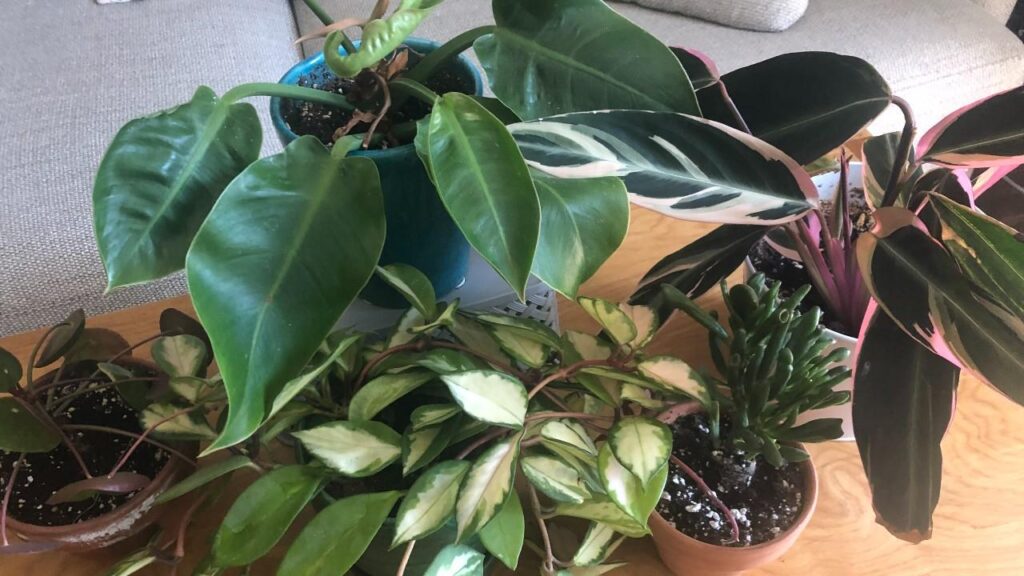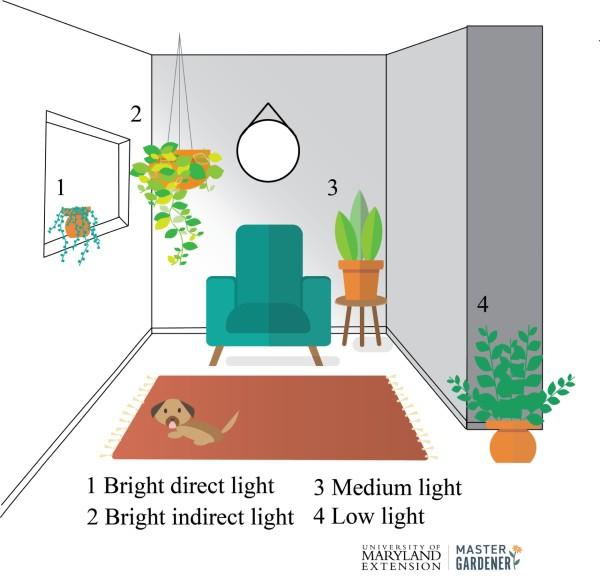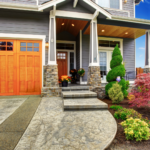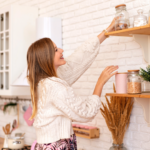Natural Lighting for Indoor Plants
Thanks to the University of Maryland / Maryland Grows this informative article on natural lighting for indoor plants.

Key points
- Light is probably the most essential factor for healthy indoor plant growth. The energy derived from photosynthesis depends on the amount of intercepted light by leaves.
- Indoor plants can be classified according to their light needs and tolerances — high, medium, or low. Select indoor plants according to the availability of natural light in your home. Otherwise, you will need to supplement light with artificial lighting.
- The three important aspects of indoor light are intensity, duration, and quality. Each one has a different impact on the plant.
Light intensity
- Footcandles (FC) is the unit of measurement for determining the intensity of natural light. One footcandle is approximately the brightness of one candle, one foot away. Outdoor, direct sunlight has a peak intensity of about 10,000 FC.
- Light intensity depends upon the distance of the light source from the plant and decreases rapidly with increasing distance.
- It influences photosynthesis or the manufacture of plant food, stem length, leaf color, leaf size, and flowering.
- Factors like the presence of curtains, insect screening, weather, seasons of the year, shade from trees and other buildings, and the cleanliness and type of window all impact light intensity. Ambient light levels can be increased by reflective, light-colored surfaces inside the room.
- Excessive light is just as harmful as too little. When a plant gets too much direct light, the leaves become pale, turn brown, and die.
- Protect houseplants from excessive direct sunlight during the summer months by increasing their distance from the window or using a light shade, such as a sheer curtain.
Footcandles and Indoor Plants

Light intensity and plant placement near a west or south-facing window

Duration of light
- Refers to the length of time the plant receives light each day.
- Poinsettia, Kalanchoe, and Christmas cactus are examples of flowering plants that are sensitive to photoperiod (day length). Buds and flowers only develop when the day length is short (11 hours of daylight or less).
- Most plants require a period of darkness to develop properly, so illuminate them for no more than 16 hours each day in total, especially if using artificial light combined with natural light.
Quality of light
- Light quality is more of a concern with growing plants using artificial light than natural light.
- Generally, sunlight is best for plant growth but artificial lighting can improve the quality of light plants receive, improving plant growth.
- When artificial light is needed to supplement natural light, the spectrum (colors the lamp produces) is important. For example, red, far-red, and blue wavelengths are most important for plant development. For healthy plants, supply all three wavelengths.
Impacts of too little light
- Indoor plants can become spindly or “leggy”, as they stretch to reach for more light. When grown where light reaches them from one direction, they can develop a lean.
- Additional symptoms can include a fading of leaf color, diminished flowering, and poor growth. The same plant grown in brighter light would be more compact, better branched, and have normal size leaves.
- Houseplants can fail after a healthy start because of inadequate light. Plants can already be stressed by the switch from growing in a greenhouse to awaiting sale in a store that may not be well-lit.
- Moving indoor plants back inside after spending the summer outside can cause leaf drop and yellowing. An example is weeping fig (Ficus benjamina) that can experience significant leaf drop. It takes time for plants to adjust to lower light conditions inside homes.
Additional resources
Gardening Under Lights – The Complete Guide for Indoor Growers by Leslie F. Halleck, published in 2018 by Timber Press, Inc.
Light for Houseplants | University of Florida
Oh by the way, I’m never too busy for any of your referrals! If you are looking to buy or sell your home (with or without a garden), contact Gigi today.








Recent Comments